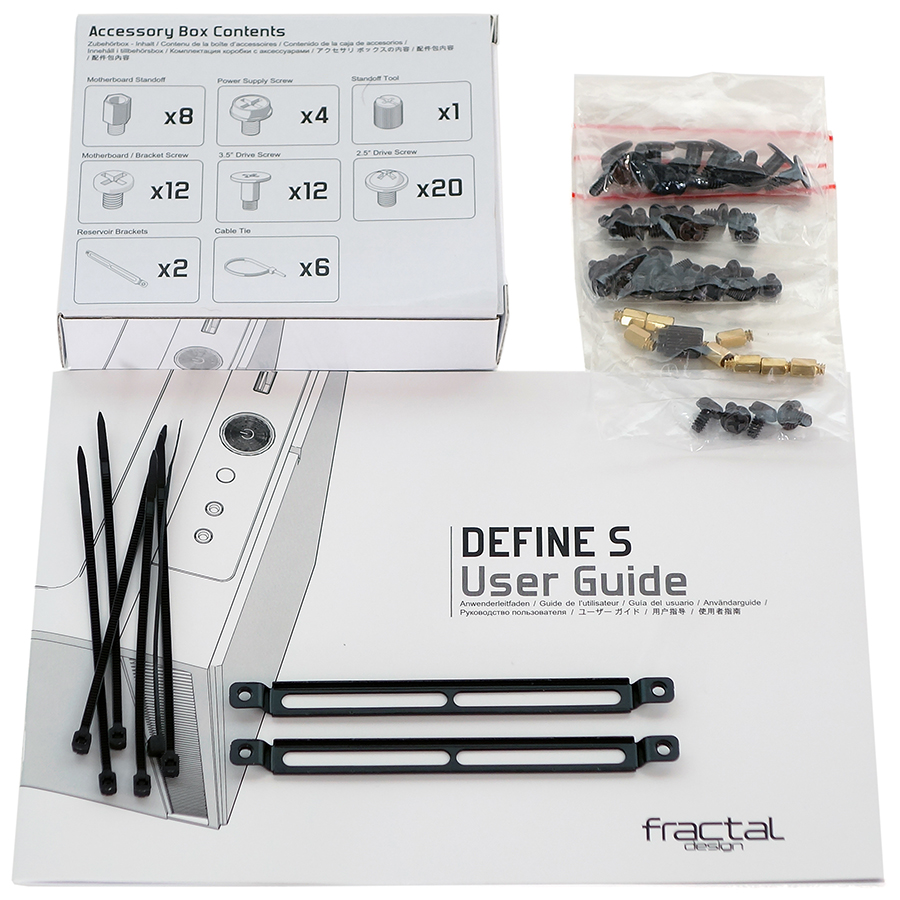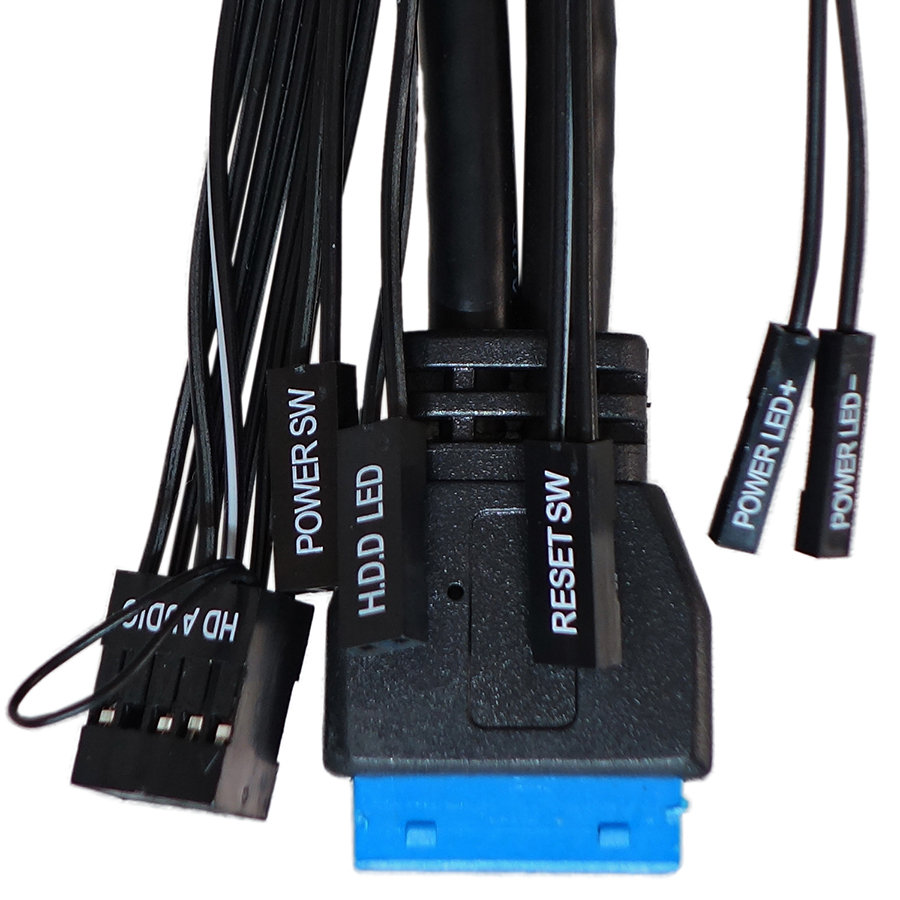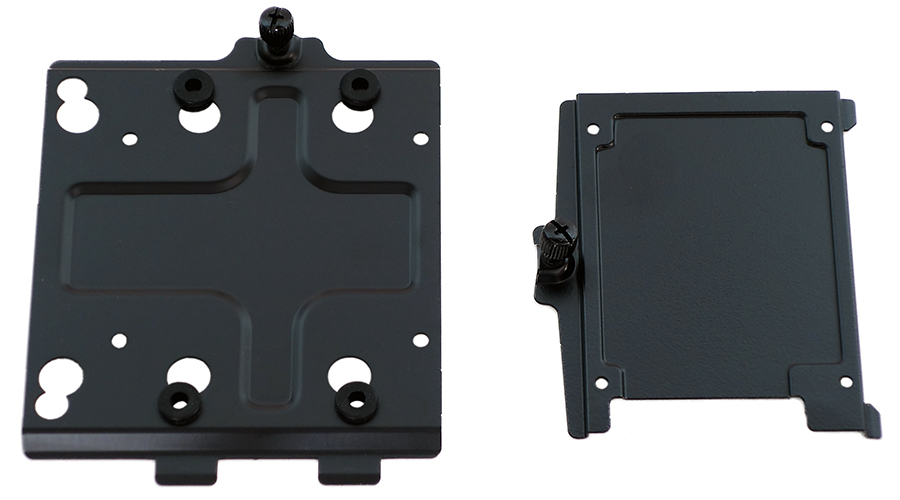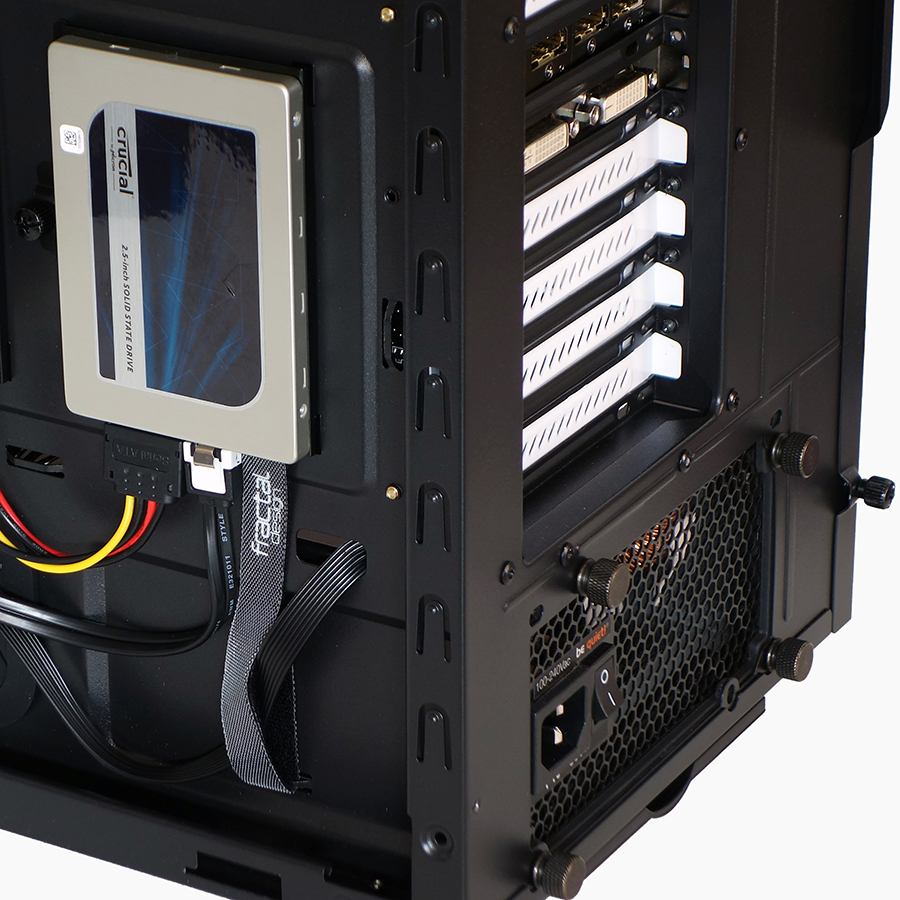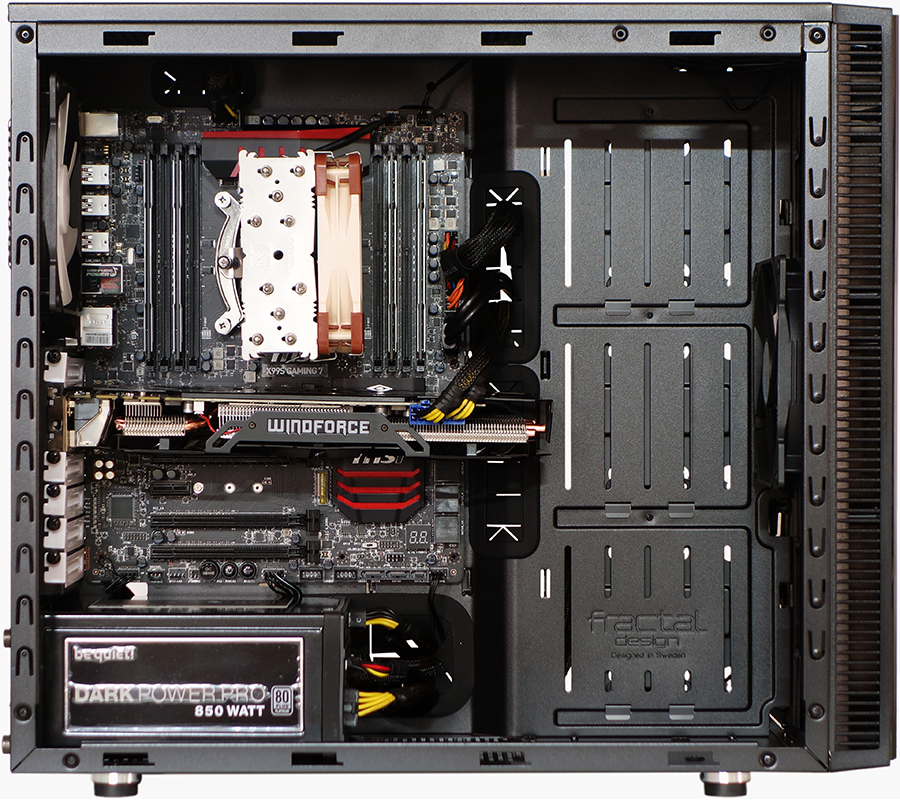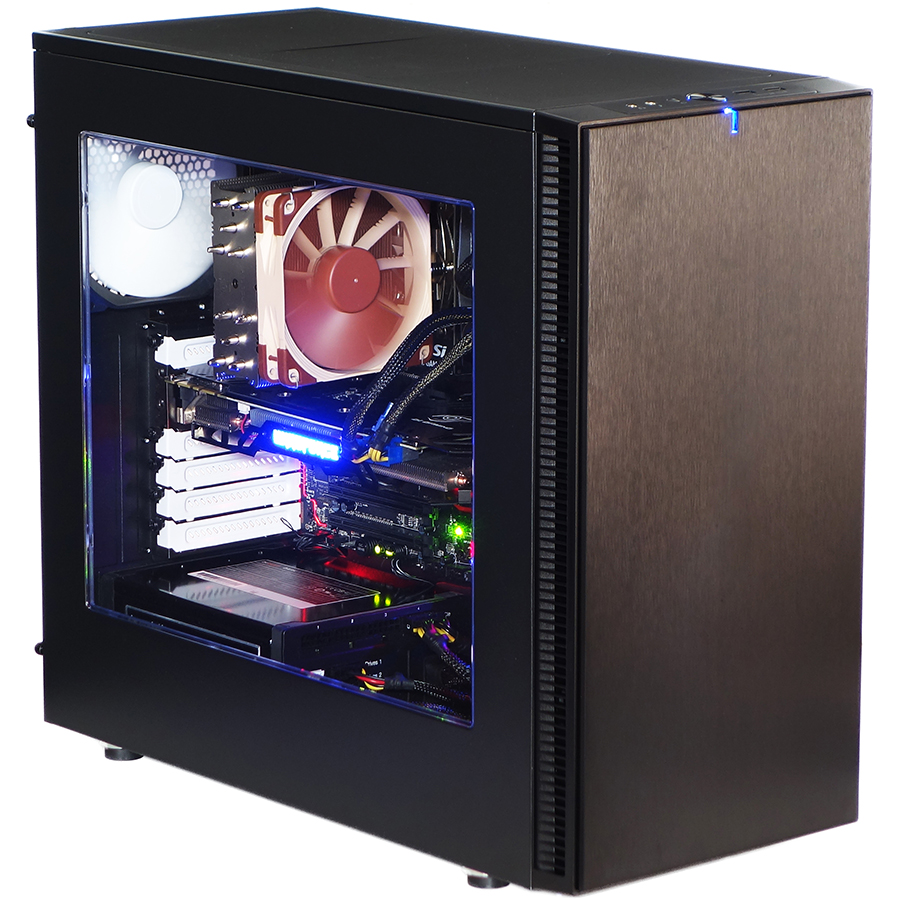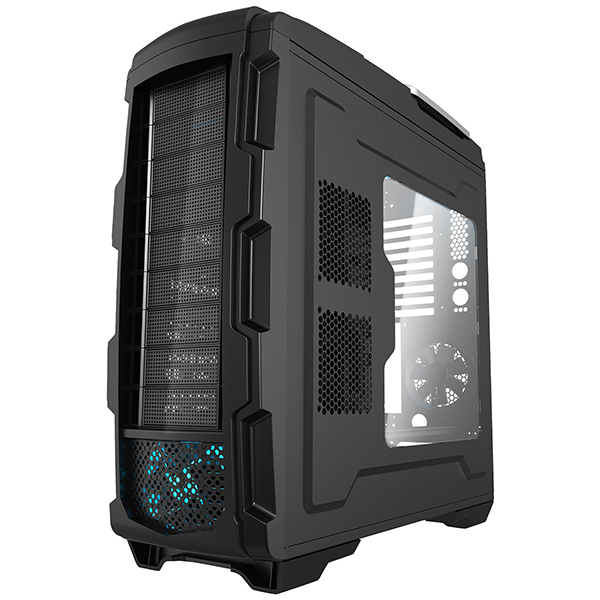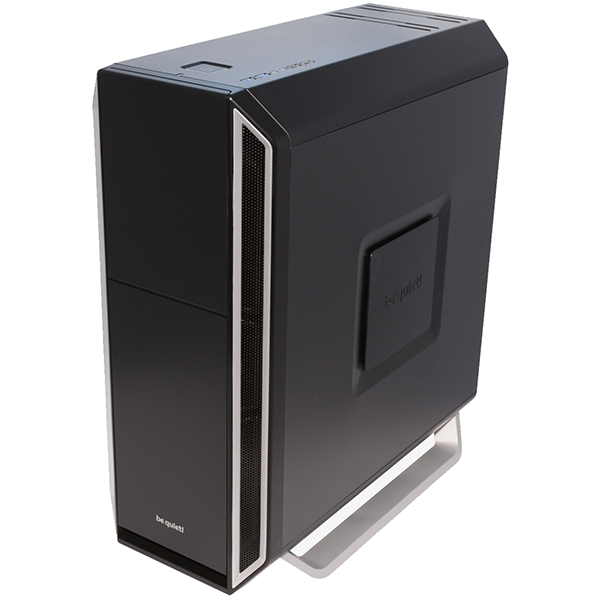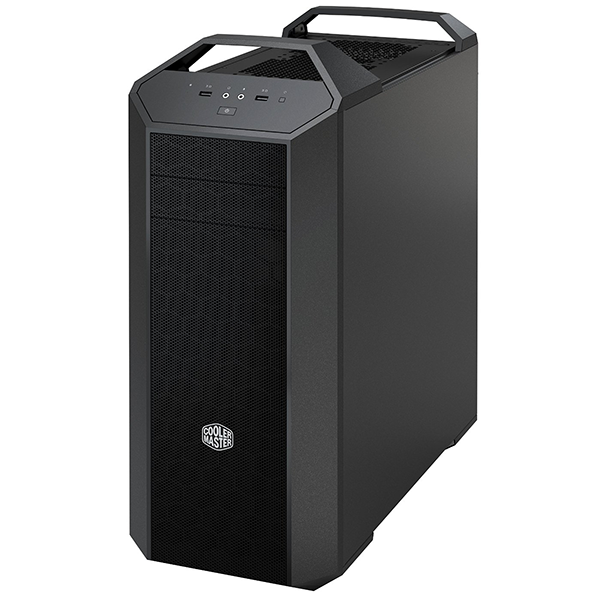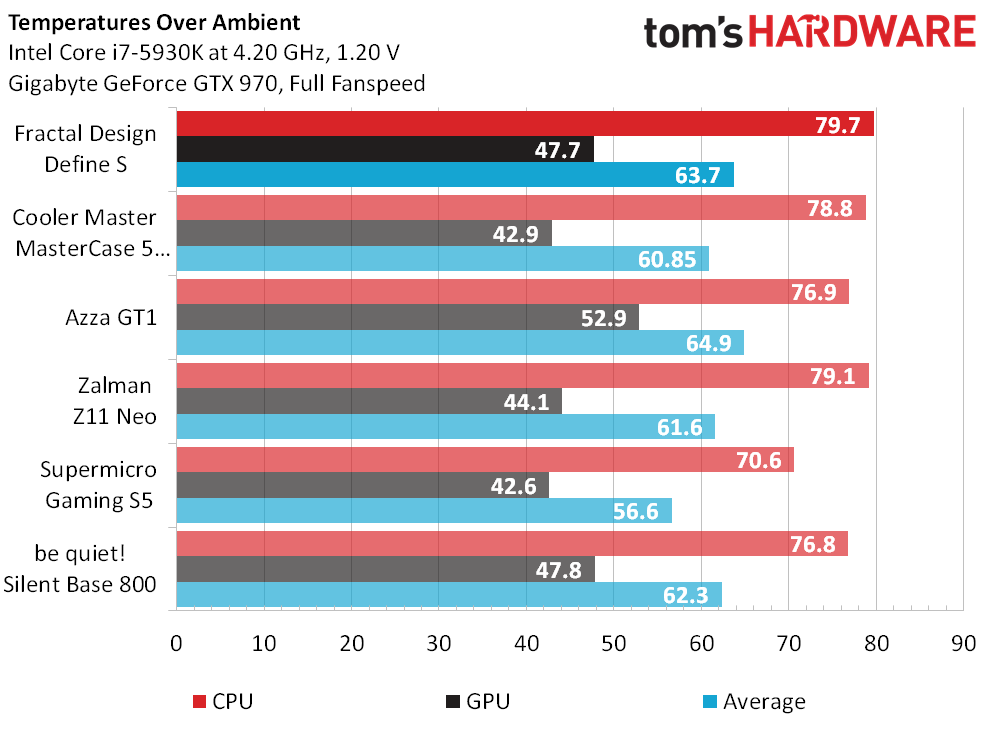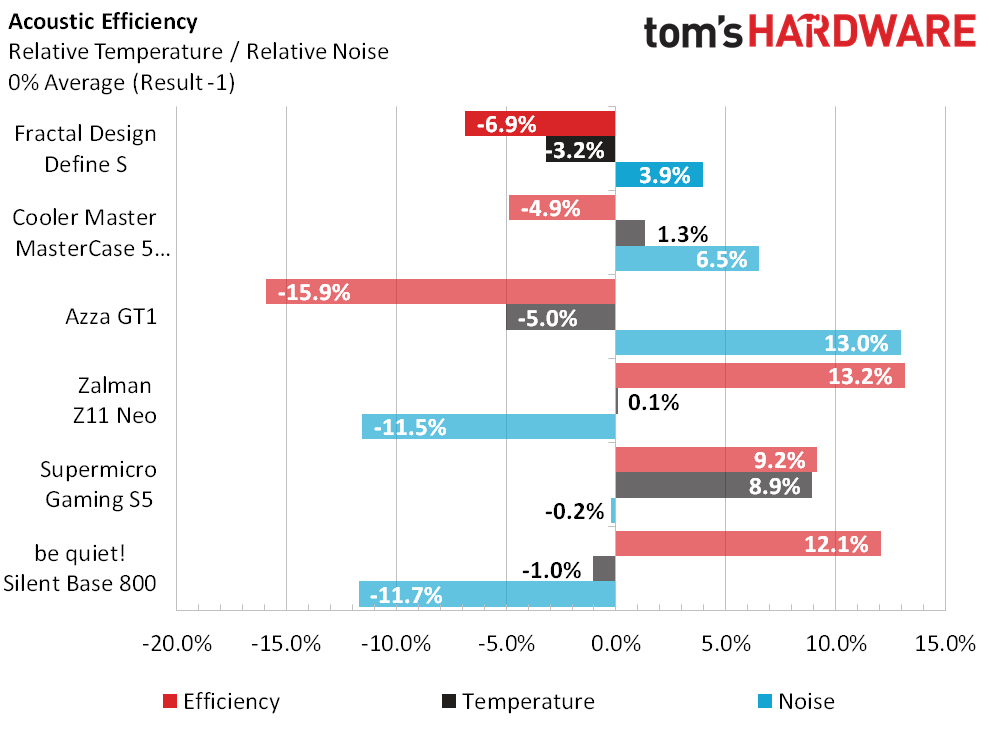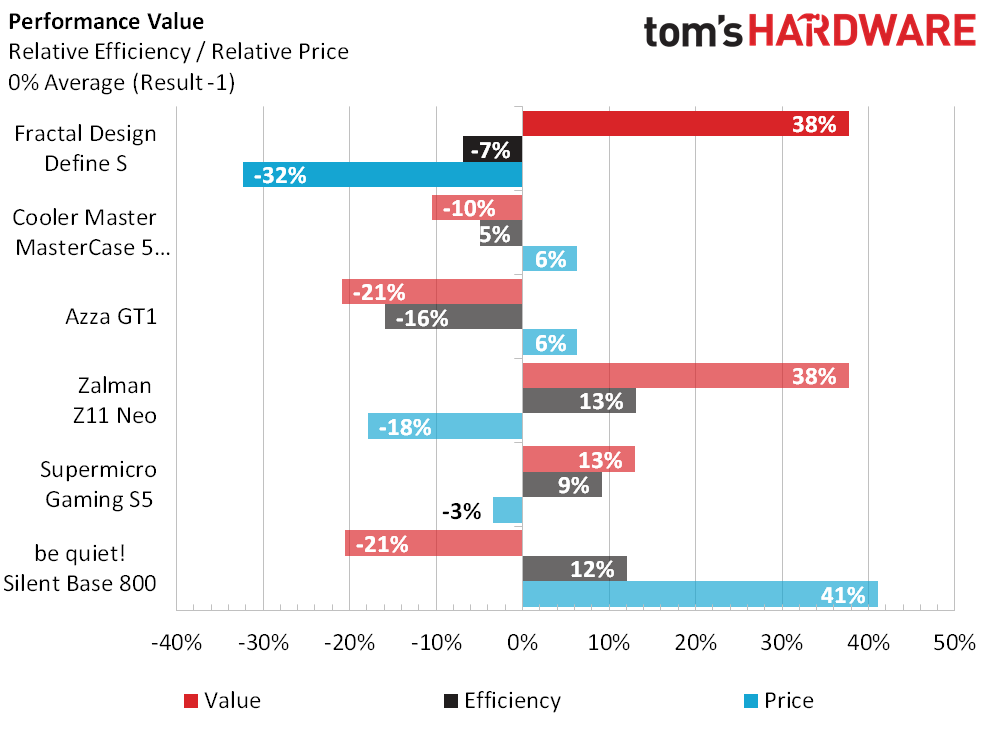Fractal Design Define S Case Review
Designed for liquid-cooling enthusiasts, Fractal Design’s Define S could be the perfect solution for your next extreme cooling build.
Why you can trust Tom's Hardware
The Build, Test Results & Conclusion
The Build
The Define S includes a basic screw pack with additional cable ties and a pair of reservoir mounting brackets.
Fractal Design omits the AC-97 audio tail that motherboards haven’t required for the past decade or so, in order to clean up the HD Audio cable.
The Power LED connector is split to support both standard (2-pin) and Asus/AT (3-pin) spacing.
Grommets dampen the vibration of 3.5” drives, but the direct mounting of 2.5” drives relies on the silence of SSDs (mechanical notebook drives are not often used in desktops).
Drives are screwed onto the trays from underneath, prior to the trays being re-attached to their corresponding positions.
Though I may personally be dismayed by the Define S’ lack of room for my 10.7” high-end motherboards, a standard 9.6”-deep ATX board leaves lots of room for additional cooling components. It’s almost a shame that I have to test it with a little air cooler.
How We Test
Full-sized case reviews use MSI’s X99S Gaming 7 in place of its X99S XPower AC because so few full-ATX cases have space for the larger motherboard. Other components remain from our reference build, including its “standardized” CPU overclock.
Get Tom's Hardware's best news and in-depth reviews, straight to your inbox.
Drivers & Settings
| Chipset | Intel INF 9.4.2.1019 |
|---|---|
| CPU | 4.2GHz (42x 100MHz) @ 1.2V Core |
| Motherboard | Firmware 17.8 (02/10/2015) |
| RAM | XMP CAS 16 Defaults (1.2V) |
| Graphics | Maximum Fan for Thermal Tests | Nvidia GeForce 347.52 |
Our new test platform runs hot and quiet, negating the dramatic performance differences its predecessor was designed to produce.
Noise is measured .5m from the case’s front corner, on the side that opens. The numbers are corrected to the 1m industry standard — used by many loudspeaker and fan manufacturers — by subtracting six decibels.
Comparison Cases
Test Results
One problem in testing “Designed For Liquid Cooling” cases is that these are not designed to be used “As Delivered”. Instead, manufacturers intend for their customers to add the fans that go with their big radiators. That doesn’t make it possible to “standardize” cases tests though. Like the MasterCase that went before it, Fractal Design’s Define S finds itself at a peculiar temperature disadvantage when limited to only its factory-supplied fans.
Likewise, the “wide open” front panel lets most of the noise from internal components escape, where Fractal Design intends for its buyers to fill that gap at least with a radiator. Still, the plastic face plate keeps it a little quieter than the MasterCase 5.
By now it should be apparent that the Define S’ only real direct competition in these charts comes from the MasterCase 5, as both are designed to hold two long radiators.
The less expensive Define S has the advantage of holding two radiators without the expense of additional brackets, yet its factory fan configuration still keeps it trailing in cooling-to-noise ratio.
As with motherboards, a straight performance-per-dollar chart doesn’t award cases with extra features any extra value. That works out in Fractal Design’s favor though, because the Define S is both cheaper and with fewer features than most of its competitors.
Direct mounting of a second radiator is the one feature the Define S has over its most-direct competitor, the MasterCase 5. Cooler Master charges extra for the extension brackets and expanded top panel which allows this — unless buyers upgrade to the MasterCase 5 Pro.
Conclusion
For about half the price of the 5 Pro, Fractal Design offers liquid builders even more empty space to work with by eliminating things such as the competitor’s divider tray and drive cages. If you didn’t want the divider tray and didn’t plan to use the drive bays or cages, the Define S takes a value win.
MORE: Best MotherboardsMORE: Best CPU Cooling
MORE: How To Build A PCMORE: All Case Content
Thomas Soderstrom is a Senior Staff Editor at Tom's Hardware, covering Cases, Cooling, Memory and Motherboards. Follow him on Twitter.
Follow Tom's Hardware on Twitter, Facebook and Google+.
- 1
- 2
Current page: The Build, Test Results & Conclusion
Prev Page Specifications, Interior & Exterior-
basroil This is no Define model... they basically took out everything that makes the Define R cases so good (noise suppression, good cooling, tons of disk space, etc)Reply -
redgarl I have a Define R2 XL and I must admit that if you use the 3.25 bay for your drives, you get the same results as here.Reply
I love my case, but my next case will be a Phantekk. -
Crashman Reply
It still has the sheet of asphalt on the back panel, and that sheet of asphalt still has a cloth facing. Same piece as before. The window of this model prevents Fractal Design from using it on the other side, but the firm also sells a non-windowed version with asphalt sheet on both sides.16780643 said:This is no Define model... they basically took out everything that makes the Define R cases so good (noise suppression, good cooling, tons of disk space, etc)
-
ingtar33 The Define S is pretty much identical to the R5. all they took out of the define r5 (to turn it into the S) was the front mounted drive mounts, and did a little tinkering with the back motherboard tray, creating more room then normally would be found in a define r5/r4Reply
I've owned a number of Fractal Design cases, the S is just a commercial version of a standard case mod done to the R5. Fractal Design learned that water cooling enthusiasts were buying their R5, and removing all the drive cages, including the dvd drives to fit large (>240mm) sized radiators into the case. So they decided there was a market for a slighly modified version of the r5 in the water cooling enthusiast community.
As a sidenote, I've owned the R4, R5 and Arc Midi. In all 3 (though only one was water cooled) i stripped out the front drive cages because the weakness of a FD case is how badly those drive cages (even when not used) destroy case airflow. Whether i was using water or not, after removing those drive bays i have seen a consistent 5C drop in temps across the board. So for my money, the Define S is an improvement on their very good R4/R5 and Arc Midi cases. -
ingtar33 if only FD would sell their cases with fans less noisy then a dump truck. the one universal problem i've had with FD cases has been the god awful case fans they come with.Reply -
stoned_ritual Replyif only FD would sell their cases with fans less noisy then a dump truck. the one universal problem i've had with FD cases has been the god awful case fans they come with.
Wow! I never had any problems with their fans. I have owned 3 fractal cases (define mini, node 304 and 804) -
eklipz330 they should make a case like this that focuses more on air cooling.Reply
also, how many ssd's can you fit? -
cgigoux Now if only they would carry these design changes into the Define Mini (which they haven't redesigned since it was introduced!). Having room behind the MoBo tray for 2 x 2.5 & 2 x 3.5 drives would create the potential for a potent SFF gaming system.Reply -
atheus Reply
I'm impatiently waiting for an updated Mini too. They have a survey up on the front page of their site which seems to be collecting opinions for a new mATX case. With any luck that's the overdue mini update they're polling for.16782687 said:Now if only they would carry these design changes into the Define Mini (which they haven't redesigned since it was introduced!). Having room behind the MoBo tray for 2 x 2.5 & 2 x 3.5 drives would create the potential for a potent SFF gaming system.
To the fellow saying Fractal Design fans are loud, you either got bad fans, or you mistook noise from some other fan in your case. The FD fans don't even have a high max RPM, so it just doesn't make sense that they would be even slightly loud, much less "noisy as a dump truck".
